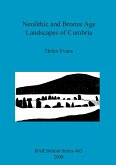This book examines the application of these ideas to Bronze Age burials in east Crete, in order to examine the historical significance of a specific pattern of changes in funerary monumentality. Within the Early Bronze Age landscape, tombs built above the ground were monumental landmarks. Such monumentality was lost during the Middle -Late Bronze Age period, when the dead were usually buried underground or in caves. At the same time, the living made their presence increasingly marked in the landscape, with the erection of 'palaces' and 'villas' and the formation of nucleated settlements. Finally, the re-emergence of burials in the landscape during the Late Minoan III period, albeit in the form of modest semi-subterranean chambers, coincideswith a fragmentation of large urban settlements and a return to modest-sized communities. An examination of funerary activity from a landscape perspective can provide a better understanding of the relationship between funerary monumentality and socio-historical process and also the ways in which this relationship was expressed in the landscape.
Hinweis: Dieser Artikel kann nur an eine deutsche Lieferadresse ausgeliefert werden.
Hinweis: Dieser Artikel kann nur an eine deutsche Lieferadresse ausgeliefert werden.








